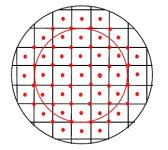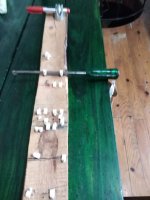Καλησπέρα σ' όλους...

Μέσα στα πλαίσια του Θέματος των
Βλητικών Δοκιμών, νομίζω οτι το επισυναπτόμενο φυλλάδιο( έχει ξανανεβεί πολλές φορές νομίζω, αλλά αξίζει!)
έχει ενδιαφέρον για τους περισσότερους φίλους που που θέλουν να δοκιμάζουν
τα φυσίγγια τους εμπορικά η ιδιογόμωσης, και παραθέτει έναν
κατ΄ εμε απλό τρόπο δοκιμών(τον
πιο απλό ίσως από αυτούς που έχω διαβάσει προσωπικά) και πιστεύω αν μη τι άλλο
καλύπτει τον μέσο κυνηγό, που θέλει να ξέρει
τι κάνει το φυσιγγιο του,
με το όπλο του,
για τα θηράματα και στις αποστάσεις που τα κυνηγά...
Μερικά βασικά αποσπάσματα (
όχι ολα) από το
φυλλάδιο παρακάτω ...
Firing
only one or two cartridges of a given type
can be highly misleading because of the considerable variation in patterning performance from cartridge to cartridge even from the same box.
A minimum of five is required but even this is not very reliable.
The aim really should be to fire 10 cartridges each time. Only then is it likely that a reliable indication of the typical number of pellets and their general distribution (and even the number of ‘holes’)
over the 30in circle for that cartridge will be obtained.
Patterns conducted at the traditional 40 yards may be different from those achieved at the 20-30yards which is normally used in the field. Similarly they may not reliably indicate the pattern beyond 40yd. This is because as the mass of pellets (shot cloud) travels downrange, the individual pellets, after initially interacting with each other, are moving in various directions. Moreover, the shot cloud can expand at an increasing rate (trumpeting). The result is that the pellet distribution at any one point downrange cannot reliably be used to predict what it will be at any other point.
Provided that minimum number is achieved and the pellets are generally well distributed over the 30in circle, then nearly every quarry species which is well placed in the pattern, should be killed.
Are sub-divided pattern plates helpful?
Sub-division of the 30in circle into inner circles or segments is an option but generally contributes
little useful additional information on pattern distribution and can be mis-leading. It tends to focus
undue attention on individual patterns, whereas what really counts
is the average performance of the given cartridge/choke combination over the whole area. At most, an inner 15in circle (which actually constitutes one quarter of the area of the 30in circle but may look as though it is half the area)
can usefully indicate excessively tight patterns, where most of the pellets are in the centre of the 30in circle, with few in the outer ‘half.
Υ.Γ: ...πολύ θα ήθελα να μεταφράσω έστω τα παραπάνω
στα Ελληνικά αλλα δεν έχω τον χρόνο...








 ...το κάναμε το θέμα ...μη πω!!!
...το κάναμε το θέμα ...μη πω!!!
